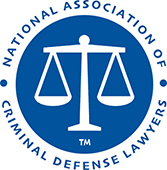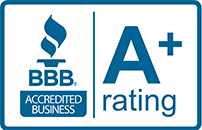

Drug Charges
The punishment for drug charges in Cincinnati, OH, and the surrounding areas of Hamilton County, varies widely. The same charge could mean prison, probation or a dismissal depending on where it happened, whether task force detectives were involved, the prosecutor’s stance, and whether the judge favors treatment over retribution.
Asserting an aggressive defense can also make a huge difference when fighting to get a better result.
The good news for alleged offenders is that it despite what can initially seem like an impossible obstacle to overcome, you may be able to have the charges against you reduced or possibly even dismissed by working with an experienced criminal defense attorney.
Lawyer for Drug Charges in Cincinnati, OH

ed offenders, and he will work to exploit those shortcomings for the most favorable outcome in your case.
Our firm understands the impact that these allegations can have on your personal and professional life. Let us see how we can help by calling to schedule a free, confidential consultation that will let our criminal defense attorneys review your case.
We understand the laws in Ohio that prohibit the possession, distribution, sale, or trafficking of controlled substances and the ways these crimes of prosecuted in the courtrooms throughout Cincinnati, OH.
Overview
- Ohio Drug Crimes Overview
- Drug Crime Definitions in Ohio
- Ohio Controlled Substances Schedules
- Types of Drug Crimes in Ohio
- Ohio Penalties for Drug Crime Offenses
- Collateral Consequences of Drug Crime Convictions in Ohio
- Defenses to Drug Charges in Ohio
- Cincinnati Drug Crime Investigations
- Evidence in Cincinnati Drug Crime Cases
- Suppression of Evidence in Ohio Drug Cases
- Ohio Court Process in Drug Crime Cases
- Special Investigators and Prosecutors for Cincinnati Drug Crime Charges
- Drug Crime Resources
- Notable Ohio Drug Crime Cases
- Cincinnati Drug Treatment Centers
- Related Drug Crime News and Articles
- Cincinnati Drug Crimes FAQs
- Additional Resources
Ohio Drug Charges Overview
The hypervigilance that Ohio legislators, prosecutors, and law enforcement now demonstrate toward drug crimes and suspected offenders stems from the state’s consistent ranking among the top five U.S. states for drug crimes. The U.S. Department of Justice Drug Enforcement Administration (DEA)’s 2018 National Drug Threat Assessment (NDTA) gives readers a broad overview of the types of drug crimes that the state aims to bring under control. According to this report, the drug crimes in Ohio center most commonly around marijuana, heroin, hydrocodone and other opioids, fentanyl and other synthetic opioids, opioid cocktails, and cocaine.

Marijuana topped the charts for the drug around which most Ohio drug incidents revolved, and these crimes increased by 72.5 percent in the reporting time frame. Cocaine took second place in this regard up until 2010. After that, opiates bumped cocaine for the second- most criminal incidents between 2004 and 2014.
The state also saw a 300-percent jump in stimulants-related drug incidents. They involved mostly methamphetamine.
Drug-Related Crimes
At the time this report was published, only 3.9 percent of drug crimes in Ohio involved weapons. However, the state is aware of heightened drug-related burglaries and robberies. Many of these crimes connect to the state creating regulations to restrict the abundant supply of prescription opioids. Low supply and high demand resulted in a boost in street prices, prompting addicted, desperate users to resort to crime to pay for their habits.
Drug gangs are another form of collateral damage that accompanies an area of intense drug use and manufacturing. When Detroit leaders made it hard for drug manufacturers, sellers, and traffickers to continue their operations there, the gangs changed their base of operations from the urban Michigan city to parts of Ohio, Kentucky, and West Virginia.
If you have been arrested for or are being questioned about drug crimes in Cincinnati, get ready to meet up with police, prosecutors, and judges who see you as part of the problem they have been charged with fixing. Look for a lawyer who understands this palpable shift in the state’s focus on drug crimes and who can help you emerge from your situation with the best possible outcome.
Drug Crime Definitions in Ohio
To better understand how Ohio views drug crimes and grasp the offense(s) with which you may be charged, a quick review of Ohio Revised Code § 2925.01 will shed some light on some key terms.
Administer: To dispense a drug to a human or animal by injecting, eating, inhaling, or any other means by which the drug can be absorbed.
Drug Enforcement Administration (DEA): The U.S. Department of Justice agency that holds responsibility for the administration of federal laws dealing with drug distribution and trafficking.
Controlled substance: Any substance, drug, preparation, compound, or mixture referred to in schedule I, II, III, IV, or V.
Cultivation: The process of growing a plant by planting it, watering it, fertilizing it, watering it, or tilling it.
Dangerous drug: A substance requiring a label indicating that Federal law forbids dispensation without a prescription or one that is permitted to be used only with the order of a licensed veterinarian. Drugs that are injected into the body, are composed of biological origin, or contain a schedule V controlled substance.
Dispense: To get rid of, deliver, pass on, exchange, or give.
Distribute: To deal, deliver, transport, transfer, or ship a controlled substance; does not include the administering or dispensing of the drug.
Drug: One of the substances included in the U.S pharmacopeia and national formulary intended for use in treating, curing, preventing, diagnosing, or mitigating a disease. A substance that alters how human bodies or animal bodies are structured or how they work.
Drug abuse offense or felony drug abuse offense: Violation of a drug abuse law, including dispensing, transferring, manufacturing, trading, administering, shipping, holding, or dealing of any kind of controlled substance.
Hypodermic: Underneath the skin (for example, hypodermic needles inject drugs below the skin and into the body).
Manufacturer: Someone who produces or makes a controlled substance.
Marihuana: Plants in the cannabis genus, including every section of the plant except for mature stalks or segments that are not extracted resin.
Narcotic drugs: Controlled substances that include cocoa leaves, opium, ketobemidone, amidone, isoamidone, isonipecaine, and chemically similar drugs.
Pharmacist: Someone who engages in the pharmaceutical practice and is licensed under Ohio Revised Code Chapter 4729 to engage in the practice of pharmacy.
Trafficking: Engaging in the sale or offer to sell a controlled substance or preparing a controlled substance for distribution, shipping, delivery, or transport, while fully knowing that the drug will be sold or resold to another individual.
Sale: Barter, exchange, offer, gift, delivery, or transfer (or offer of the same), along with the connected transaction, made by a servant, employee, principal, agent, or proprietor. Delivery, gift, barter, transfer, exchange, offer, or gift (or offer of the same), as well as the related transaction, made by an individual (as a proprietor, principal, servant, agent, employee, or servant).
“Schedule I,” “Schedule II,” “Schedule III,” “Schedule IV,” and “Schedule V”: Drug classifications that are defined and established under section 3719.41 of the Ohio Revised Code, and amended in section 3719.43 or 3719.44 of the Revised Code, or as specified by emergency rule under section 3719.45 of the Revised Code.
Wholesaler: Someone who supplies drugs that they have not produced, manufactured, or personally prepared, as defined within section 4729.01 of the Revised Code (excludes individuals who supply substances in fulfilling official, written prescriptions).
Ohio Controlled Substance Schedules
Much like the five federal schedules of controlled substances established by the Controlled Substances Act (CSA), Ohio Revised Code § 3719.41 also created five schedules for illegal drugs. The classification of certain controlled substances can have an impact on the nature of the charges a person faces for drug crimes. Like the CSA, Ohio’s drug schedules are ranked according to the severity of the abuse potential for controlled substances:
- Schedule I — Controlled substances with the highest potential for abuse and no known or rarely accepted medical purpose. Includes 3,4-methylenedioxymethamphetamine (MDMA or Ecstasy), substituted cathinones (“bath salts”), heroin, lysergic acid diethylamide (LSD), phencyclidine (PCP), and psilocybin (“magic mushrooms”).
- Schedule II — Controlled substances with high potential for abuse, but may have limited medical applications. Includes Adderall®, cocaine, codeine, gamma-hydroxy-butyric acid (GHB or Date Rape Drug), hydrocodone, methadone, methamphetamines, morphine, opium, oxycodone (OxyContin® or Percocet®), and oxymorphone.
- Schedule III — Controlled substances with lower potential for abuse and may be used for medical purposes. Includes anabolic steroids, ketamine (Special K), lysergic acid, and testosterone.
- Schedule IV — Controlled substances with lower potential for abuse and may be commonly used for medical applications. Includes alprazolam (Xanax®), batrbital, diazepam (Valium®), and zolpidem (Ambien®).
- Schedule V — Controlled substances with least potential for abuse and may be commonly used for medical applications. Includes narcotic drugs containing not more than 200 milligrams of codeine per 100 milliliters or per 100 grams, not more than 100 milligrams of dihydrocodeine per 100 milliliters or per 100 grams, not more than 100 milligrams of ethylmorphine per 100 milliliters or per 100 grams, not more than 2.5 milligrams of diphenoxylate and not less than 25 micrograms of atropine sulfate per dosage unit, not more than 100 milligrams of opium per 100 milliliters or per 100 grams, or not more than 0.5 milligram of difenoxin and not less than 25 micrograms of atropine sulfate per dosage unit.
Types of Drug Charges in Ohio
Drug crimes that are listed in the Ohio Revised Code include:
- Trafficking, aggravated trafficking in drugs under Ohio Revised Code § 2925.03
-
- Gift of 20 grams or less — Minor misdemeanor for first offense, third-degree misdemeanor for subsequent offense
- Less than 200 grams — Fourth-degree felony
- Equals or exceeds 200 grams, but less than 1,000 grams — Fourth-degree felony
- Equals or exceeds 1,000 grams, but less than 5,000 grams — Third-degree felony
- Equals or exceeds 5,000 grams, but less than 20,000 grams — Third-degree felony, presumption that prison term shall be imposed
- Equals or exceeds 20,000 grams, but less than 40,000 grams — Second-degree felony, mandatory minimum prison sentence of five years
- Equals or exceeds 40,000 grams — Second-degree felony, mandatory prison sentence of eight years
- Illegal manufacture of drugs under Ohio Revised Code § 2925.04
-
- Less than 100 grams — Minor misdemeanor
- Equals or exceeds 100 grams, but less than 200 grams — Fourth-degree misdemeanor
- Equals or exceeds 200 grams, but less than 1,000 grams — Fifth-degree felony
- Equals or exceeds 1,000 grams, but less than 5,000 grams — Third-degree felony
- Equals or exceeds 5,000 grams, but less than 20,000 grams — Third-degree felony, presumption that prison term shall be imposed
- Equals or exceeds 20,000 grams — Second-degree felony, mandatory prison sentence of eight years
- Possession of controlled substances under Ohio Revised Code § 2925.11
-
- Less than 100 grams — Minor misdemeanor
- Equals or exceeds 100 grams, but less than 200 grams — Fourth-degree misdemeanor
- Equals or exceeds 200 grams, but less than 1,000 grams — Fifth-degree felony
- Equals or exceeds 1,000 grams, but less than 5,000 grams — Third-degree felony
- Equals or exceeds 5,000 grams, but less than 20,000 grams — Third-degree felony, presumption that prison term shall be imposed
- Equals or exceeds 20,000 grams, but less than 40,000 grams — Second-degree felony, mandatory minimum prison sentence of five years
- Equals or exceeds 40,000 grams — Second-degree felony, mandatory prison sentence of eight years
- Possessing drug abuse instruments, Ohio Revised Code § 2925.12 — Second-degree misdemeanor for first offense, first-degree misdemeanor if alleged offender has previous drug abuse conviction.
Penalties for Cincinnati, OH Drug Offenses
The amount of possible fines and the length of imprisonment terms depend on the classification of the crime with which a person has been charged. It is also important to remember that certain charges listed above may be enhanced if an offense took place in the vicinity of a school or a juvenile. Generally, Ohio sentencing guideline penalties are as follows:
It is also important to remember that certain charges listed above may be enhanced if an offense took place in the vicinity of a school or a juvenile. Generally, Ohio sentencing guideline penalties are as follows:
- Minor Misdemeanor — Maximum fine of $150
- Fourth-Degree Misdemeanor — Up to 30 days in jail and maximum fine of $250
- Third-Degree Misdemeanor — Up to 60 days in jail and maximum fine of $500
- Second-Degree Misdemeanor — Up to 90 days in jail and maximum fine of $750
- First-Degree Misdemeanor — Up to 180 days in jail and maximum fine of $1,000
- Fifth-Degree Felony — Up to 12 months in prison and maximum fine of $2,500
- Fourth-Degree Felony — Up to 18 months in prison and maximum fine of $5,000
- Third-Degree Felony — Up to five years in prison and maximum fine of $10,000
- Second-Degree Felony — Up to eight years in prison and maximum fine of $15,000 fines
- First-Degree Felony — Up to 11 years in prison and maximum fine of $20,000
Collateral Consequences of Drug Crime Convictions in Ohio
Many people focus on the expected consequences of imprisonment or fines when they think about paying a price for their crimes. With drug crimes, however, the consequences extend far beyond these punishments.
A drug crime conviction in Ohio generates a slew of collateral consequences. These are disadvantages and penalties imposed on top of prison time, fines, and community service, and they can affect a person for the rest of their life.
As outlined by the Office of Criminal Justice Services, these consequences number in the hundreds and include sanctions across five categories: public employment, civil rights, custody issues, regulated professions, and other privileges. They are not, however, defined as part of Ohio’s criminal code.
Examples of Collateral Consequences
Some of the collateral consequences you might face if convicted of your Ohio drug crime include:
- Ineligibility for public employment
- Ineligibility to serve on a jury
- Random drug testing
- Conviction as grounds for divorce
- Loss of right to vote in public elections
- Loss of parental rights in custody cases
- Loss of Ohio Public Employees Retirement System (OPERS) benefits
- Loss of driving privileges
If you are convicted of a felony drug offense, you might:
- Be ineligible to join the military
- Be deported
- Have a state professional license revoked
- Have your passport revoked
For a comprehensive database of collateral consequences, try searching the database provided by the Civil Impacts of Criminal Convictions Under Ohio Law (CIVICC).
If you are convicted of a drug crime, your lawyer can work to relieve you of some of the collateral consequences you might otherwise face.
Defenses to Drug Charges in Ohio
When Joslyn Law Firm handles your drug crime case, our legal team will carefully consider the best strategy for your defense. We will launch our own investigation into how police investigated the offense with which you have been charged. We will dissect the police report, inspect every piece of evidence, interview witnesses, and, of course, document your account of the events that led to your arrest.
Based on what we learn from this investigation, our lawyers will craft a defense strategy that fits the circumstances of your case.
The law provides several defenses we can put into motion. Consider the following options.
Fourth Amendment Violations – Unlawful Search and Seizure
Judges and juries place a great deal of weight on a criminal defendant’s Constitutional rights. Under the U.S. Constitution’s Fourth Amendment, you are protected against unreasonable searches and seizures. For a court to condone police officers’ trampling this basic right, the risk to public safety must outweigh your right to privacy.
Under the right circumstances, your lawyer might argue that the evidence against you was obtained unlawfully, in which case, charges against you will likely be dismissed. The “unlawfulness” of a search and seizure depends primarily on location. Courts generally consider searches of a suspect’s home as “presumptively unreasonable,” unless police have probable cause, the homeowner consents to the search, or the search happens as part of a lawful arrest.
Furthermore, only items that are in “plain view” can be seized as evidence if they are not described in a search warrant. The concept of plain view applies to your home, as well as your car.
Rules regarding searches in traffic stops also may work in favor of your defense. Not only do laws dictate whether a police officer can search your car, but also whether the traffic stop is even legal in the first place. Violations of these laws can result in any discovered evidence being thrown out, potentially leaving prosecutors with no case against you.
We shall explore the rules governing evidence later in this article, under Suppression of Evidence.
Entrapment
Your lawyer could argue a case of entrapment, an affirmative defense that does not dispute the allegations against you, but rather claims that law enforcement induced you to commit a crime that you otherwise would not have committed.
If a confidential informant coerced you to traffic drugs, or a police officer pressured you to commit some form of drug crime, these actions may constitute entrapment. It means someone baited you to act in a way contrary to your nature.
As the defendant, the burden of proof for entrapment falls on you. The court will apply two standards when considering your defense:
- Subjective: You must prove that the crime you committed represented behavior contrary to your nature.
- Objective: You must prove that law enforcement’s tactics were enough for a law-abiding person to act outside their nature and commit this crime.
Look for a lawyer who understands how to effectively argue and prove this defense, which can prove challenging. This defense requires the skills of a lawyer who can deftly walk the line between what police can and cannot do in the course of investigating a suspect.
Substance Was Not a Controlled Drug
This defense argues that you are not guilty of committing a drug crime because the substance of interest was not actually a controlled substance. Your lawyer might argue that what officers perceived to be an oatmeal box full of marijuana was nothing more than your stash of fresh-picked basil or oregano. Or that a baggie of supposed cocaine was actually a sandwich bag of baking flour.
This defense places the burden of proof on the prosecutor, who will need to send the substance to a lab for testing, then arrange for the lab analyst to testify in court as to the nature of the seized substance.
Medical Marijuana Exception
If your offense involved marijuana, Ohio’s medical marijuana exception rule might apply to your defense. Ohio Revised Code Title 37 Chapter 3796 allows for the cultivation, processing, dispensing, testing, possession, or use of marijuana for a medical purpose. Examples of medical conditions that qualify for the medical marijuana exception rules include:
- Cancer
- Ulcerative colitis
- Multiple sclerosis
- AIDS
- Epilepsy
- Post-traumatic stress disorder
- Fibromyalgia
- Traumatic brain injury
- Inflammatory bowel disease
If you registered with the state and can show a doctor’s recommendation for medical marijuana use for your medical condition, HB 523 allows you to buy, use, and possess marijuana in a variety of forms, including:
- Edibles
- Tinctures
- Plants
- Oils
- Patches
By meeting the proper conditions set forth in Ohio law for medical marijuana, a court may drop the marijuana-related charges against you.
The Drugs Were Not Yours
Your lawyer could argue that the drugs connected to your case did not belong to you. With the proper evidence to support this argument, this defense could get you off the hook. Similarly, your attorney could present the argument for a “lack of possession.” The law requires that possession entail the defendant’s “dominion and control” of a controlled substance. If police find drugs in a house you rent, your lawyer might argue this defense.
Unwitting Possession
With an “unwitting possession” defense, your lawyer would argue that you were unaware that you possessed a controlled substance. This defense can convince a jury of your innocence if, for example, in your job as a delivery person, police discover that the package you delivered carried cocaine.
Drugs Were Planted
This defense involves seeking out the investigating police officer’s complaint file. Your lawyer will embark on an investigation of the search and seizure to extract details and evidence that support your claim.
No Drugs
Sometimes it happens that the drugs the police seized get lost in the chain of command. Without the drugs, your case has no substance. The court will likely drop the charges.
It is always possible that somewhere through the chain of command for the drugs seized as evidence against you, the drugs were lost or misplaced. Whatever the case, if the prosecution cannot prove the presence of the drugs pertaining to your case, the possession charge against you will probably be dropped.
Cincinnati Drug Offense Investigations
In keeping with the state’s laser focus on drug crimes, Cincinnati law enforcement uses a wide variety of tools and tactics to investigate these offenses. We shall review some popular investigation methods here.
Wiretapping
This term embodies any use of specialized electronic devices to monitor everything from phone conversations to emails, internet use, and even faxes. Without a wiretap, police can use a pen register to track who you call and who calls you—just not the contents of your communications. Police can also monitor your electricity usage (spikes might indicate grow lights) and use infrared imaging to assess heat coming through the walls of your home. These days, wiretapping can be expanded to include the use of drones and stingray tracking to identify your location.
Controlled Telephone Calls
With this technique, police can have someone you trust call you on the phone and engage in a seemingly benign phone conversation. However, your “friend” is speaking from a script crafted to get you to say something incriminating. Calls are recorded and can be admitted against you as evidence.
Tracking Mail
Law enforcement sometimes enlists the help of the U.S. Postal Service (USPS) in its investigations. If police suspect someone is sending controlled substances via the mail, the USPS can assign a “mail cover” to keep an eye on the suspect and to alert police when packages for or from the individual arrive at the post office. Postal Inspectors can seize a package to test its contents before delivering it, and they can intercept packages with suspected drugs, often working with canine units to sniff for illegal substances. The USPS arrests at least 1,500 drug trafficking and money laundering suspects every year.
Surveillance
Ohio police still conduct stakeouts, or personal observations, of suspects’ locations. Law enforcement can set up unmarked vans or cars with fixed surveillance systems to discreetly monitor the coming and going of people and other activities. Sometimes these units are manned, but other times, the vehicles rely solely on recording devices and hidden cameras—with no need for an officer.
Confidential Informants
As the Federal Bureau of Investigations (FBI) confirms, the government commonly makes use of confidential informants (CI) to help with drug crime investigations. These informants keep an eye on the activity in an area of interest and tip police off when they notice something. According to the United States Court of Appeals, Ninth Circuit, “Without informants, law enforcement authorities would be unable to penetrate and destroy… drug trafficking cartels… terrorist gangs, money launderers…and the likes.”
Controlled Buys
The controlled buy method works best when law enforcement has reason to believe that someone is predisposed to committing a drug crime. The “purchaser” police officer is first inspected to check for the presence of drugs on their person. They then use pre-recorded money to approach the suspect and attempt to enter a transaction for drugs. If the transaction succeeds, the fake “purchaser” is again checked for drugs. If they find illegal substances, they are field tested. If the substance proves to be an illegal drug, the seller can be arrested.
Task Forces
Since 1988, Ohio has been releasing funds from the federal Byrne Memorial to agencies that create drug task forces.
The Ohio Task Force Commanders Association (OTFCA) leads Ohio’s 27 multi-jurisdictional Drug Task Forces, which act as investigative arms of collaborative police departments and sheriff offices. METRICH and other task forces operate as independent law enforcement units.
The OTFCA shares information and resources via a partnership with the State of Ohio. Their objective is to curtail the flow of illegal substances throughout the state.
In 2019, the U.S. Bureau of Justice Assistance granted a $5,712,220 Edward Byrne Memorial Justice Assistance Grant (JAG) in 2019 to the Ohio Office of Criminal Justice Services. The state is more equipped now than ever before with task forces that are facilitating Ohio’s war on drugs.
Evidence in Cincinnati Drug Offense Cases
Drug cases rely heavily on evidence presented by prosecutors. Thanks to the increasing number of task forces and sophisticated electronic devices, it is easier than ever to generate all types of evidence for every type of drug crime, including:
Drug Trafficking
- Postal mail
- Scales, business cards, plastic baggies
- Recorded buy money
- Logbooks
Manufacturing/Cultivation
- Chemicals used to prepare drugs
- Grow lights
- Cultivation schedules
- Home drug lab and/or equipment used to manufacture drugs
All Drug Crimes
- Text messages
- Witness testimony
- Police body cameras
- Computers
- Police officer testimony
- Crime labs results
- Computer files
- Audio recordings
- Surveillance videos
- Photos
The fact that prosecution relies so heavily on evidence makes it all the more imperative that your lawyer seize opportunities to suppress evidence whenever possible.
Suppression of Evidence in Ohio Drug Cases
If your lawyer can effectively argue for suppression of key evidence in your drug case, you stand a good chance of beating a conviction.
Any evidence that police obtain through illegal means cannot be admitted in court. Furthermore, any evidence found as a result of police finding the illegally obtained evidence is considered “fruit of the poisonous tree.” In other words, it, too, is excluded from court.
We reviewed some of the ways in which evidence can be ruled out in the earlier section of this article, Defenses to Drug Possession.
Violations of Fourth Amendment
Police have the right to search your property only with a search warrant or, in the absence of a search warrant, only when specific conditions are met. Otherwise, whatever evidence they discover can be excluded from court.
Your lawyer could argue any of several forms of Fourth Amendment violations, depending on the details of your case. For example, even if you consented to the search of your home, if you did not understand what this meant, the consent did not truly take place, making the search unlawful.
Furthermore, without a search warrant, police can only seize evidence that appears in plain sight. This means they cannot open your glove box, dig through your underwear drawer, or open coffee cans in search of incriminating evidence.
Although police can search a home or vehicle in the process of a lawful arrest, they may only search areas where they have reason to believe that evidence of the crime exists.
After an illegal stop, evidence found after impoundment of your vehicle must be excluded from court. Even after a lawful traffic stop, police must give you a chance to have someone pick up your car or otherwise secure it. If this does not happen, and evidence appears during the impoundment inventory check, your lawyer can move to have this evidence thrown out.
Violations of Fifth Amendment Rights
Once you are in custody, police are required under the Fifth Amendment to read you your Miranda rights (right to remain silent, right to an attorney, etc.) before interrogating you. If you say you want an attorney, the interrogation must stop until your lawyer is there to advise you. If officers violate your Miranda rights, your lawyer can move to suppress any evidence obtained during your interrogation.
Ohio Court Process in Drug Crime Cases
By understanding the court process you are about to face, you may find yourself better able to prepare for these important events. In Ohio, a drug crime case proceeds as follows:
1: Arraignment or Intake
You stand in court while the judge formally informs you of the drug charges against you. You will enter your plea of guilty or not guilty. The judge sets bail, and you have the option to post it to avoid sitting in jail while you wait for trial. Most likely, you will be told the date of your next hearing and perhaps your trial.
2: Pre-Trial Hearings
The judge checks in on the progress of your case. Your lawyer and the prosecutor will attend the hearing, too, and your lawyer will have the opportunity to negotiate and to settle any legal issues with the judge.
3. Motion Hearings
Your lawyer (and the prosecutor) file motions to suppress evidence, present trial witnesses, request change of venue, or any other motions necessary before the trial. If your lawyer thinks the prosecution lacks evidence, your attorney can file a motion to dismiss the case. Either side can also file a motion for summary judgment and have the judge decide the case based on presented facts.
4: Readiness Hearings
The court confirms that both sides are ready for trial. If either side is not prepared, they can request a continuance. Sometimes, a case may be resolved at this stage with no need to proceed to trial. In this case, sentencing follows.
5: Trial
You might be offered the choice between a bench trial (trial by judge) or jury trial. The prosecutor will present their evidence against you. They must convince the judge or jury, beyond a reasonable doubt, that the charges against you are true. If a jury decides the case, their decision must be unanimous, otherwise the judge will declare a mistrial.
6: Sentencing
If you are found guilty, the judge will decide sentencing, unless you plead guilty for a negotiated sentence. Otherwise, your attorney can recommend a sentence. If your lawyer thinks it could help, they might bring select family members and friends in to speak on your behalf in hopes of receiving a lighter sentence.
Special Investigators and Prosecutors for Cincinnati Drug Crime Charges
Ohio’s Attorney General’s Office supports the state’s prosecuting attorneys with drug crime cases, starting with their investigation and preparing them for trial to prosecuting them in court.
Investigation
The Bureau of Criminal Investigation (BCI) serves as Ohio’s crime lab and offers its investigative services to Cincinnati, as well as state and federal law enforcement. BCI special agents will help out at crime scenes and put forensic specialists to use to facilitate any drug crimes investigation. The Investigations Division also offers the following special units that focus on drug crimes:
- Heroin Unit
- Narcotics unit
- Marijuana Eradication Unit
The BCI’s Lab also uses state-of-the-art chemical and instrumental testing equipment to analyze seized drugs and identify components of any submitted substances—quickly and accurately.
At the county level is the Hamilton County Heroin Task Force, established by the Hamilton County Association of Chiefs of Police. The group consists of agents from the Hamilton County Sheriff’s Office, Cincinnati Police Division, Norwood Police Department, Ohio BCI & I, the Ohio State Patrol, Drug Enforcement Administration Cincinnati RO, and Blue Ash Police Department.
Special Prosecutors
Hamilton County employs special prosecutors in its Drug unit. These attorneys handle felony drug cases wherein large quantities of drugs are at issue. To make the most of their efforts with these serious cases, these special prosecutors work hand-in-hand with regional drug task forces from the earliest stages of investigating drug crimes all the way through to sentencing.
Drug Task Forces
Ohio’s interest in curbing drug crimes has resulted in the creation of multiple drug task forces throughout the state. In February 2020, an additional $5 million in state funding was awarded to more than two dozen anti-drug task forces. The funds have been dedicated to the specific task of capturing high-level drug traffickers, along with other anti-drug initiatives.
Cincinnati, Hamilton County, and the state of Ohio stand ready to investigate and prosecute suspected drug offenders. If you are being questioned about drug crimes in Cincinnati, you should take the matter seriously. Consider hiring a Cincinnati drug crimes lawyer who has handled these types of cases. Call Joslyn Law Firm today for a consultation: (513) 399-6289.
Drug Crime Resources
Justice for Drug Crimes Across Ohio Often Erratic – This article in Cincinnati.com from May 31, 2014 explains while drug cases are not always prosecuted equally or consistently in Cincinnati. The article shows why the punishment often depends on whether task force detectives were aggressive and if the judge favors treatment over punishment. Statistics for drug crimes in Ohio show that the number of people who die from drug overdoses surpassed the number of drug dealers sent to prison in 2012. A review of local drug trafficking indictments from ten mid-sized Ohio counties found about 40% completed cases ended with prison sentences from 2012 and 2013. Ohio Department of Rehabilitation and Correction figures from 2013 show that Ohio’s criminal justice system sentenced 1,865 drug dealers to prison.
Cincinnati Regional Narcotics Unit (RENU) – Visit the website of the Ohio Task Force Commanders’ Association to learn more about RENU. Operated by the Hamilton County Sheriff’s Office, the Cincinnati Regional Narcotics Unit is a task force assigned to investigate drug trafficking offenses in the Greater Cincinnati and Hamilton County area. Visit the link to find news stories and press releases from the Organized Crime Division/RENU Commander. The unit targets the flow of illegal drugs and organized criminal activity into Ohio communities.
Notable Ohio Drug Crime Cases
To understand Ohio’s judicial approach to drug crimes, you might find it helpful to review some cases that have shaped where we are today.
The State of Ohio v. Pribble
This case resolved a conflict between two Ohio statutes as they relate to repeat offenders. The defendant, a man from Adams County who was being sentenced for meth production, straddled two possible sentences, depending on which statute was applied. One statute places a cap of three years on sentences for all but certain third-degree felonies. The other statute imposes a mandatory five-year prison term because the offense was a third-degree felony. The Ohio Supreme Court ruled that the five-year statute took precedence.
Terry v. Ohio
When a Cleveland police patted down three men he thought were about to rob a store, he found concealed weapons on two of the individuals, John Terry and Richard Clinton. Both men were tried and convicted of carrying concealed weapons. Their lawyers appealed the conviction, arguing that the search was illegal. Justice Earl Warren of the U.S. Supreme Court ruled that a limited pat-down met criteria for lawful search as defined within the Fourth Amendment, based on the defendants’ suspicious behavior. Furthermore, Chief Warren ruled that stop-and-frisk searches did not necessarily constitute Fourth Amendment violations.
The State of Ohio v. Gonzales
Cocaine seized in the case of defendant Rafael Gonzales was a mix of cocaine and mock cocaine. However, the brick that police seized weighed 139 grams, so Gonzales was sentenced to 11 years imprisonment for a first-degree felony. The 6th District Court of Appeals appealed the sentence, ruling that the total weight could not count toward Gonzales’ sentence, as the entire brick was not truly an illegal substance.
Although the Ohio Supreme Court upheld the appeals court’s ruling in 2016, the decision was reversed in 2017 by Chief Justice Maureen O’Connor. The justice wrote that fillers constitute part of the usable drug and therefore their weight should be included when considering the charge and sentencing. As a result of O’Connor’s ruling, prosecutors can now seek higher penalties for cocaine possession, even if the substance is not pure.
Cincinnati Drug Treatment Centers
If you or a loved one is suffering from a drug abuse problem or addiction, consider contacting one of the following Cincinnati treatment centers:
Sunrise Treatment Center provides outpatient substance abuse treatment for adult men and women in an outpatient setting.
Joseph House Inc progressive treatment facility for veterans suffering from addiction and homelessness.
Gateways Outpatient Alcohol and Drug Services offers medication-assisted treatment to people coping with an addiction to prescription drugs/heroin (opioids)
Center for Addiction Treatment provides drug and alcohol addiction treatment and support for men and women
Central Clinic Court Clinic Division offers a range of evaluation and treatment services for addiction issues of people in the criminal justice system
BrightView Cincinnati place to recover from drug dependency with the help of the latest medical treatments in tandem with psychological and social services
Life Walk Solutions Outpatient Treatment Services gives outpatient substance abuse treatment to adult men and women
eXclusive Services outpatient substance abuse treatment services for adult men and women
Adolescent Substance Abuse Programs substance abuse treatment facility in Cincinnati serving adolescents and their families
Talbert House Adult Services Outpatient non-profit network of social services that center on mental health, substance use, and welfare-to-work programs.
Crossroads Center holistic behavioral healthcare to prevent or remediate substance abuse
Alcoholism Council of Cincinnati Area Women’s Program non-profit, community-based organization offering professional resources on drug-related issues.
Individual Care Center Inc outpatient and inpatient programs for adults and adolescents suffering from chemical dependency
First Step Home Women’s Treatment Center helps women with addictions, helping them to become self-sufficient, productive members of society while providing a safe place for their children
Prospect House Recovery Center For Men alcohol- and drug-free environment for men who want to participate in individual and group counseling.
Related Drug Crime News and Articles
DOJ operation busts local drug ring selling on darknet (09/22/20)
Cincinnati individuals who participated in a local drug ring moved $2.8 million through drug trafficking and money laundering across the Darknet. The drug ring participants were indicted as the result of an FBI international drug enforcement operation that yielded 179 arrests, $6.5 million seized, and 500 kg of drugs seized. FBI Director Christopher Wray stated the agency will continue to put all its investigative tools and techniques to use in identifying and prosecuting Darknet opioid dealers.
Ohio Court upholds judge decision against defense lawyer (09/11/20)
Judge Jeannine Pratt of Miami County found Cincinnati defense lawyer Lisa Wells guilty of violating conditions of an intervention in lieu of conviction program. The judge sentenced Wells to three years of “no breaks” community control. Wells appealed the decision, based on supposed due process violations, but Ohio’s 2nd District Court of Appeals upheld Pratt’s decision. Wells was first charged in 2016 for having amphetamines in her vehicle. Her program was approved in 2017. She failed drug tests and failed to appear in court for ordered court hearings.
DEA busts massive drug distribution and laundering ring in Cincinnati (11/20/19)
DEA and IRS agents raided a jewelry store in downtown Cincinnati. More than $3 million was laundered there and at an automotive store in Carthage. A confidential source cooperated in the federal drug conspiracy investigation, which began in Cincinnati and networked out to Los Angeles, Las Vegas, and Milwaukee. Seized items included 42 pounds of methamphetamine, 19 pounds of fentanyl, and 100 pounds of cocaine. Both court-ordered surveillance and wiretaps helped the FBI seal the investigation.
Cincinnati Drug Crimes FAQs
Q: How long will I go to jail for a drug crime in Ohio?
A: Your sentence depends on the type of drug offense with which you are charged. If you are charged with a minor misdemeanor, you will not face jail time. But if you are charged with a more serious time, you could face jail or prison time. A felony of the first degree, you could face up to 11 years in prison.
Q: Will I get probation for a drug offense in Ohio?
A: A judge may sentence you to probation instead of jail or prison, depending on the circumstances of your case. Work with a criminal defense lawyer to build your case and fight for the best outcome possible.
Q: Will I be charged with a felony or misdemeanor if I was arrested for drugs in Ohio?
A: The level of charges you face depends on the circumstances of your case, including the type and quantity of drugs in possession, and other factors. Drug charges range from minor misdemeanors to felonies or the first degree.
Q: Can I reduce felony drug charges to a misdemeanor charge in Ohio?
A: In some cases, yes, you can reduce felony drug charges to misdemeanor charges. A plea agreement can reduce your charges. You may even be able to get the charges dropped altogether. Work with a lawyer who can negotiate a plea agreement on your behalf and fight for the best outcome possible.
Q: What are defenses to drug offenses in Ohio?
A: Possible defenses to drug charges include unlawful search and seizure, entrapment, drugs were planted, unwitting possession, and arguing that the drugs were not yours. Your lawyer may also argue that you qualify for the medical marijuana exception.
Q: What is the most common drug offense?
A: Possession of an illegal controlled substance represents the most common drug offense.
Q: Is drug possession a felony in Ohio?
A: In certain cases, drug possession is considered a felony in Ohio. Examples include aggravated possession, with the degree depending on the amount of substance in possession. Fifth-degree felony charges apply to quantities less than bulk amount. Third-degree felonies apply to quantities that are bulk amount or more, but less than five times bulk amount.
Q: What is the bulk amount in Ohio drug cases?
A: According to the Ohio Revised Code, the bulk amount of a controlled substance can be equal to or greater than 10 grams. Alternatively, it can be equal to or greater than 25 doses of a controlled substance.
Q: Can a felony drug charge be reduced to a misdemeanor in Ohio?
A: Non-violent and low-level drug possession offenses can be reduced from felony charges to misdemeanors under Senate Bill 3 (SB3).
Additional Resources
Justice for Drug Crimes Across Ohio Often Erratic – This article in Cincinnati.com from May 31, 2014 explains while drug cases are not always prosecuted equally or consistently in Cincinnati. The article shows why the punishment often depends on whether task force detectives were aggressive and if the judge favors treatment over punishment. Statistics for drug crimes in Ohio show that the number of people who die from drug overdoses surpassed the number of drug dealers sent to prison in 2012. A review of local drug trafficking indictments from ten mid-sized Ohio counties found about 40% completed cases ended with prison sentences from 2012 and 2013. Ohio Department of Rehabilitation and Correction figures from 2013 show that Ohio’s criminal justice system sentenced 1,865 drug dealers to prison.
Cincinnati Regional Narcotics Unit (RENU) – Visit the website of the Ohio Task Force Commanders’ Association to learn more about RENU. Operated by the Hamilton County Sheriff’s Office, the Cincinnati Regional Narcotics Unit is a task force assigned to investigate drug trafficking offenses in the Greater Cincinnati and Hamilton County area. Visit the link to find news stories and press releases from the Organized Crime Division/RENU Commander. The unit targets the flow of illegal drugs and organized criminal activity into Ohio communities.
Find a Lawyer for Narcotic Crimes in Cincinnati, OH
If you have been charged with possessing, manufacturing, or any other type of controlled substance and marijuana crime, you will want to immediately seek our the best legal representation you can find.
Joslyn Law Firm represents clients throughout the greater Cincinnati area of Hamilton County. Our Cincinnati criminal defense attorneys will aggressively pursue the best possible outcome in your case.
In addition to representing clients charged with possession of a controlled substance, we also represent clients charge with more serious offenses such as possession with intent to sell, and drug trafficking.
You can have our firm provide a complete evaluation of your case that will help you understand all of your legal options. Call (513) 399-6289 to let us begin developing a winning defense.




























